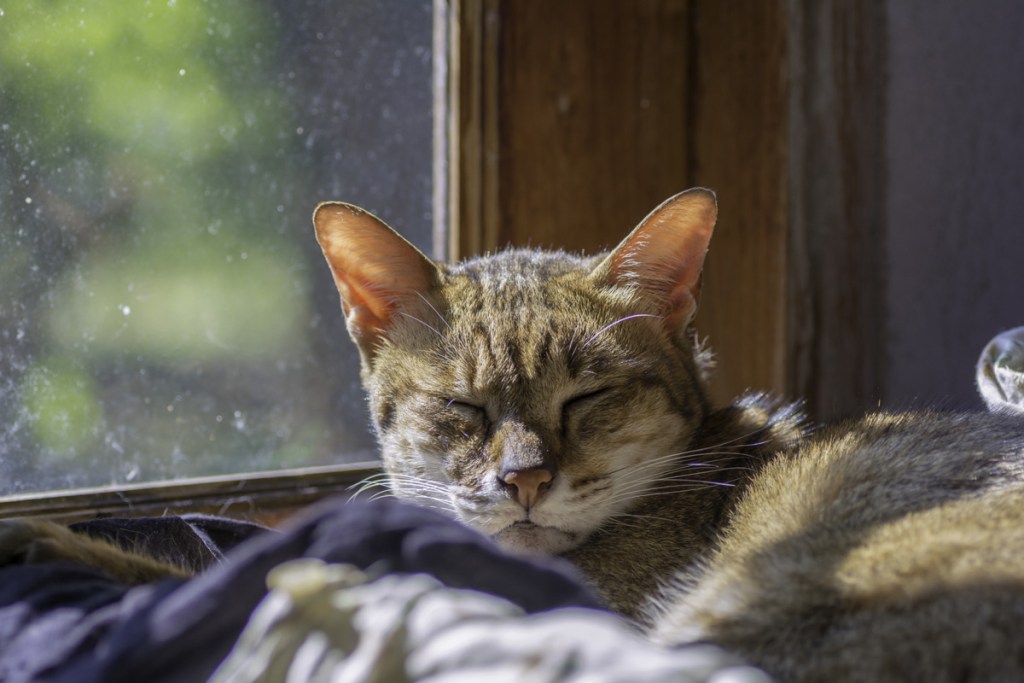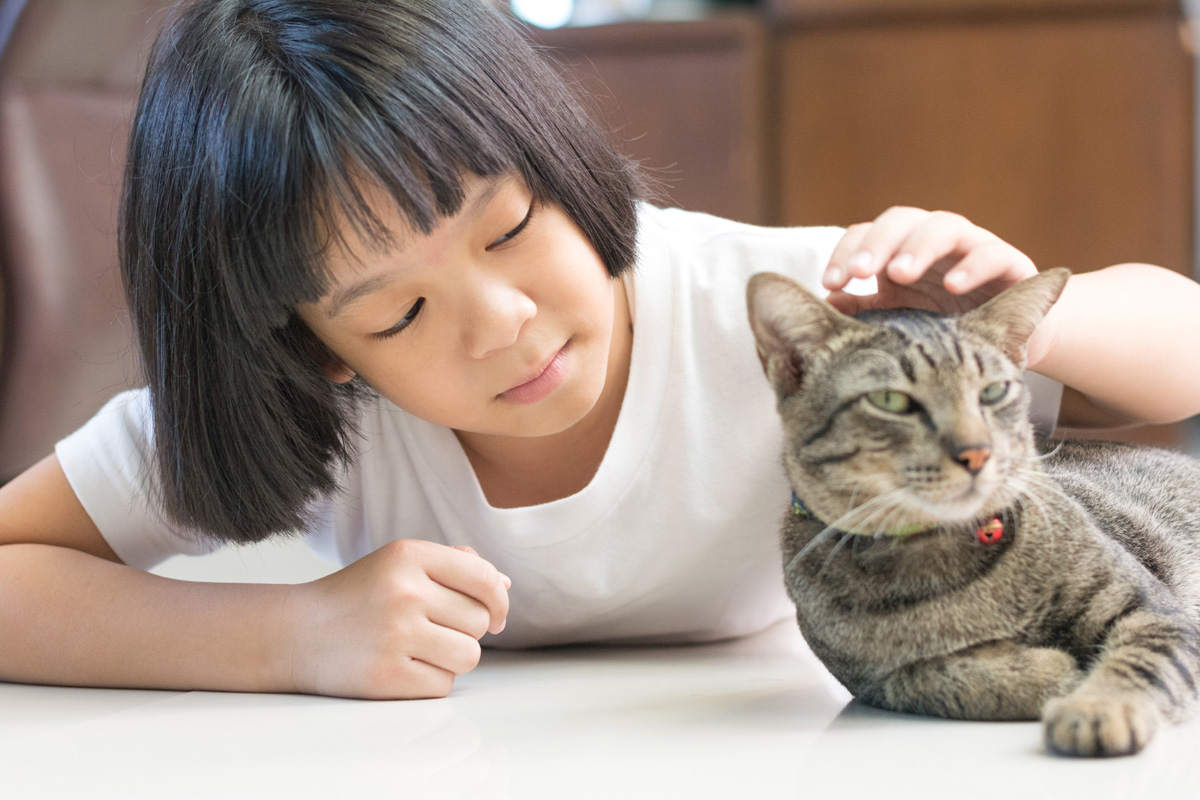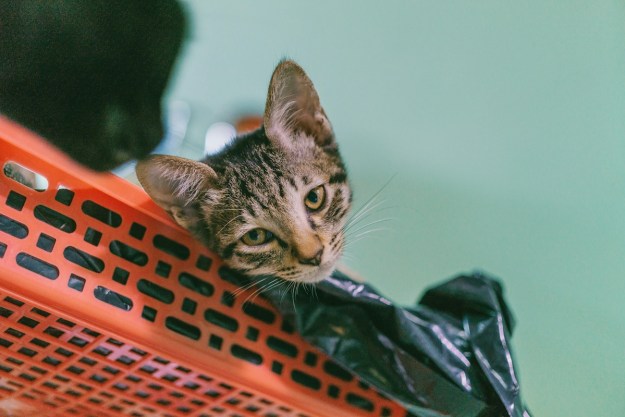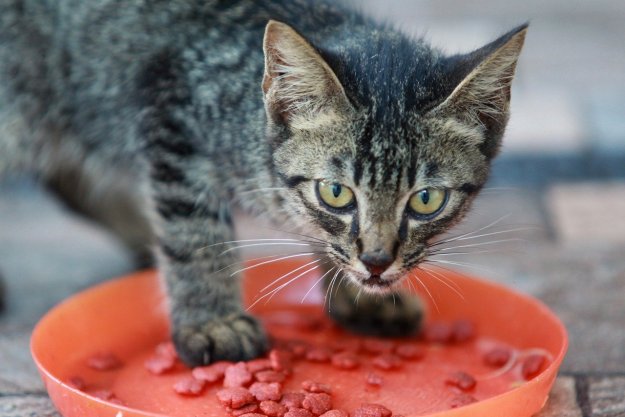What comes to mind when you hear that a cat is infected by the feline leukemia virus (FeLV)? If you’re like many people you imagine a sick, suffering cat with no quality of life. But that’s not the case, says Joni Miller, cat caregiver at Best Friends animal sanctuary in Utah.
“The reality is felines who are positive for the virus remain healthy for months or years after their diagnosis until the virus becomes active,” Miller says. Regardless of the length of their life, a cat with the virus can lead a happy life, just like any other cat, say Best Friends animal advocates.
According to Cornell Feline Health Center, FeLV is one of the most common infectious diseases in cats, affecting between 2 and 3 percent of all cats in the United States. Kittens are more susceptible to the virus than adult cats. Fortunately, the prevalence of the disease has decreased significantly in the past 25 years since the development of an effective vaccine and accurate testing procedures, according to veterinary experts at Cornell. So, what are the signs of feline leukemia? We’ll give you an overview.

What exactly is the feline leukemia virus?
FeLV is a retrovirus that impairs a cat’s immune system and can cause cancer along with a variety of blood disorders. Veterinary experts say that the virus commonly causes anemia or lymphoma and can predispose cats to deadly infections. However, about 70 percent of cats who are exposed to FeLV resist infection or eliminate the virus on their own. Feline leukemia only affects cats and cannot be spread to humans or other animal species. The disease was once considered a death sentence, especially for shelter cats, but that’s no longer true. According to the American Association of Feline Practitioners (AAFP), cats infected with FeLV may live for many years. And veterinarians say that a decision for euthanasia should never be made solely based on whether or not a cat is infected.
What are the first signs of feline leukemia?
According to experts at Best Friends, there are no specific signs of FeLV infection. The only way to know if your cat is infected is to test for the virus. A screening test requires only a few drops of your cat’s blood and usually can be performed in a matter of minutes, according to PetMD. If the screening test is positive, your veterinarian may recommend further blood testing to confirm the diagnosis.
How long does it take for feline leukemia to show symptoms?
In the early stage of infection, it’s common for cats to show no symptoms at all. Over weeks, months, or years an infected cat’s health may deteriorate and there may be recurring illnesses. Signs that a cat may be FeLV-positive include:
- Weight loss
- Persistent fever
- Diarrhea
- Inflammation of the gums and mouth
- Skin, urinary, and upper respiratory tract infections
- Poor coat condition
What are the stages of feline leukemia?
According to Alley Cat Allies, a leading nonprofit cat advocacy organization, there are three possible stages for FeLV-positive cats.
Abortive stage
In the abortive stage, a cat may experience a transient viral infection, fight off the virus, and develop future immunity. Kittens younger than 16 weeks are much less likely to fight off FeLV than adult cats.
Regressive stage
Some cats produce an effective immune response to the infection while continuing to harbor the virus in their bodies. This regressive stage appears to be temporary for most cats, and they become free of the virus within a few years.
Progressive stage
If the initial FeLV infection is not overcome, the virus replicates and the kitten or cat becomes persistently infected. The virus eventually moves to the bone marrow and compromises the immune system. Cats may show no signs of illness for several years but FeLV-related diseases such as anemia, skin diseases, and leukemia typically develop within two to three years.
How did my indoor cat get feline leukemia?
There are several ways that an indoor-only cat could become infected with feline leukemia. For example, if they come into contact with a new cat or kitten introduced to the household who is FeLV-positive. If the cats aren’t separated, the virus could be transmitted through grooming, fighting, or sharing of dishes. Also, if any cat in your household is allowed to go outside, he could pick up the virus and transfer the infection to other indoor cats.

How to protect your cat from feline leukemia
The only sure way to protect cats from feline leukemia is to prevent their exposure to infected cats. According to the Cornell Feline Health Center, many FeLV-positive cats aren’t diagnosed until after they’ve lived with other cats. All new cats should be tested for the virus before adding them to a multicat household. If exposure does happen, all cats in the household should be tested for the virus. Ideally, veterinarians say, infected and non-infected cats should be separated to avoid transmission. Experts at the AAFP recommend vaccinations for all kittens and on an as-needed basis for adult cats. The vaccine is also highly recommended for cats allowed outside.
In conclusion
While a diagnosis of feline leukemia can be emotionally devastating, it’s important to remember that it’s not a death sentence. Properly managed care can give infected cats longer, healthier lives, AAFP experts say. That care may include regular check-ups, blood testing, vaccinations, and parasite prevention. With the help of a veterinary team, you and your FeLV-positive cat can create many happy memories together.
Editors' Recommendations
- Why do cats’ eyes dilate? What your pet’s extra big peepers mean
- Cats chirping at birds is totally normal (and here’s why you should encourage it)
- Why do cats twitch in their sleep? The real reasons behind this curious behavior
- Why do cats cover their face when they sleep? This adorable behavior, explained
- Is your cat obese? 5 ways to help them slim down




